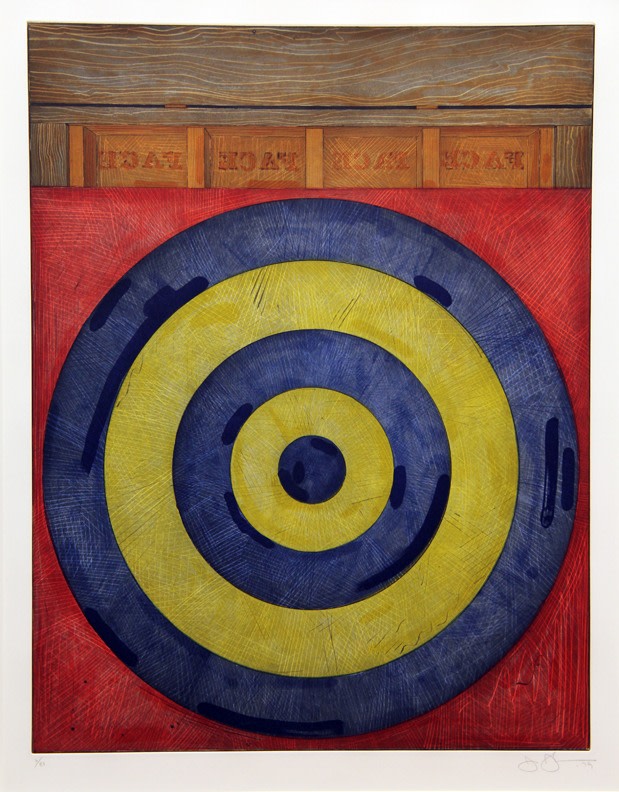
Jasper Johns (b. 1930)
Painter, sculptor, and printmaker, Jasper Johns became one of America's best-known post-Abstract Expressionists and Minimalists. His name is most associated with pictorial images of flags and numbers, Pop-Art subjects that he depicted in Minimalist style with emphasis on linearity, repetition, and symmetry. Johns completed his first flag painting in 1955, worked with his iconic alphabet subjects in 1956, sculpture works in 1958, and finally moved on to lithographs in 1960.
Unlike Abstract Expressionism, these signature works seem removed from the artist's emotions. They are modernist in that they lack traditional perspective, focusing on the interrelationships of color and shapes, but are realist in that they have a recognizable subject matter.
Johns was born in Allendale, South Carolina, and grew up without any formal art training. He attended the University of South Carolina for two years before moving to New York City in 1949 and getting drafted into the Army. Following his service, Johns returned to New York and began experimenting with styles. Flag, dated 1955, earned him his first major attention. It was revolutionary in that it was a simple geometric design on a large canvas, divorced from emotional or political connotation.
Johns’ flag paintings are credited as key in the development of Minimal Art in that the focus of these pieces is on linearity and uniformity, thus de-emphasizing the unique creative talents of the artist. For Johns, major influences in the Minimalist style were his friendships with dancer Merce Cunningham, composer John Cage and fellow artist Robert Rauschenberg.
Over the next few years, Johns began working with symbolic imagery. In 1956 and 1957, he began incorporating numbers into his paintings; in 1958, he did his first sculpture of mundane objects. In 1960, he executed his first lithographs, and he would later spend seven weeks at the printers Gemini G.E.L. in Los Angeles.
Johns was given a comprehensive retrospective at the Whitney Museum of American Art, New York, in 1977. In 1978, he showed at the Museum Ludwig, Cologne, Musee National d'Art Moderne, Paris, Hayward Gallery, London, and Seibu Museum of Art, Tokyo. He was represented at the Venice Biennale that same year. In 1979, the Kunstmuseum Basel put on an exhibition of his graphic work, a show which subsequently toured Europe. In 1988, he was awarded the Grand Prix at the Venice Biennale.
In 1997, a major retrospective of 225 of Johns' work was held in New York at the Museum of Modern Art, organized by Kirk Varnedoe. Following this, he began a new series that was much more muted, mysterious and serene than his earlier work. The exhibition of these paintings debuted on September 15, 1999 at the San Francisco Museum of Modern Art and traveled to the Yale University Art Gallery in January 2000, then to the Dallas Museum of Art.
